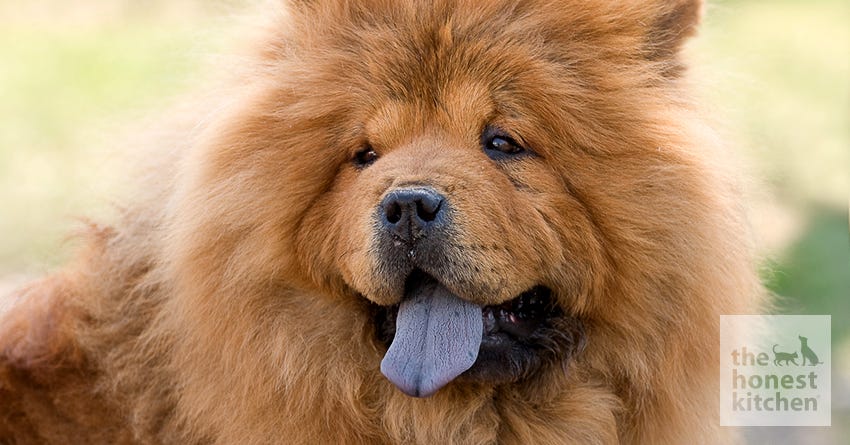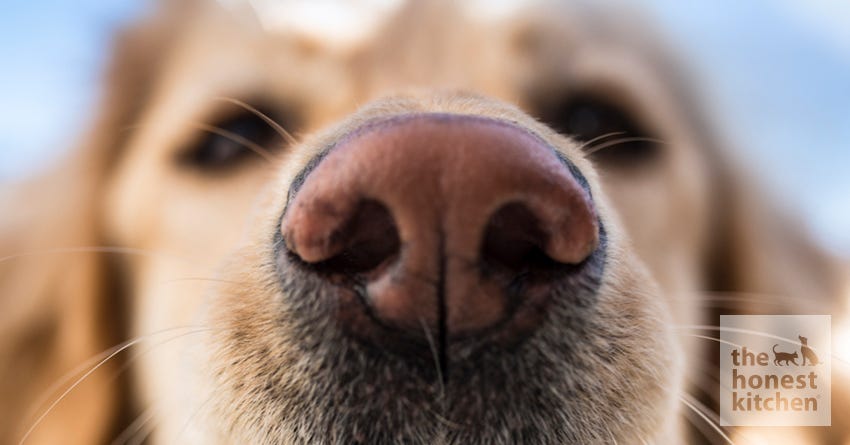Dogs come in all sorts of shapes and sizes and colors.
But have you noticed that their noses come in different colors as well? Most have black or pink noses, but some dogs have brown or liver-colored noses.
In fact, the exposed skin on dogs, even the skin under their fur, can vary in color. But why is that?
Noses
The color of a dog's nose is largely dependent on both his age and breed. Some breeds have black noses, while other breeds are more prone to pink noses. Still other breeds have noses that are the same color as their fur.
Many puppies are born with pink noses that darken as they age. Conversely, some dogs with black or dark noses may have noses that get lighter as they get older. Some are speckled.
There is also a condition called "winter nose" or "snow nose" where a dark nose will get pink in the winter, but go back to black in the summer. Sometimes only a portion of the nose will turn pink. One possible explanation for this is that the enzyme (tyrosinase) which makes melanin (pigment) is temperature sensitive. Snow nose is a harmless condition.
There can be other reasons for a dog's nose to change color, however. If your dog's nose is crusty, has one or more raised areas, is running, or if he's digging or scratching at it, take him to the vet. It could be a sign of an allergic reaction, an infection, the result of an injury, or from other causes requiring medical intervention.
If your dog has a pink or light colored nose, either as a result of winter nose or year round, it can be prone to sunburn. Putting a dog-safe sunblock on your dog's nose can help protect it from both sunburn and skin cancer.

Chow Chow | istockphoto/Iurii
Tongues
All puppies are born with pink tongues, and most dogs have pink tongues throughout their lives. Even Chow and Shar Pei puppies' tongues start out pink, and then turn the dark color associated with the breeds when the puppies are around 8 to 10 weeks old.
But it's not all that uncommon for a dog to have dark patches or marks on their tongues and skin. There are at least 30 other breeds of dogs where spots are common. Some of the more common breeds are Collies, Cocker Spaniels, German Shepherds and Labrador Retrievers.
A spotted tongue or palate is nothing to worry about as long as the spots are smooth and in the skin, not on the skin. A spotted tongue is similar to a freckle or liver spot in a human -- it's just an increase in pigment.
If the spot is raised, oozing, or is bothering your dog, though, have the vet check it out. It could be a symptom of a more serious condition, including cancer, which should be treated right away.
Toe Pads and Nails
Like noses and tongues, toe pads can be black, pink or spotted. Again, it's just a matter of pigmentation. Even dogs' nails can come in black, brown, tan or white. Some dogs may even have one nail with more than one color to it.
Those black spots on your dog's tongue, his black and pink toe pads, and the spots you can see on his belly under his thin fur are among the things that make him your dog. Pay attention to all his coloring, both fur and skin. These spots can help you identify him should you get separated. And being alert to changes to his skin can help buy you and the vet valuable time to treat potentially serious conditions.

 Chow Chow | istockphoto/Iurii
Chow Chow | istockphoto/Iurii

